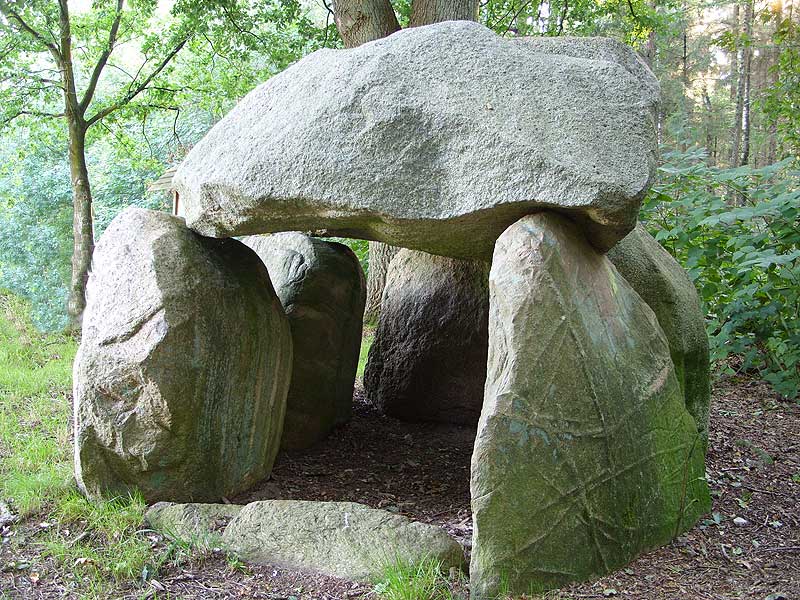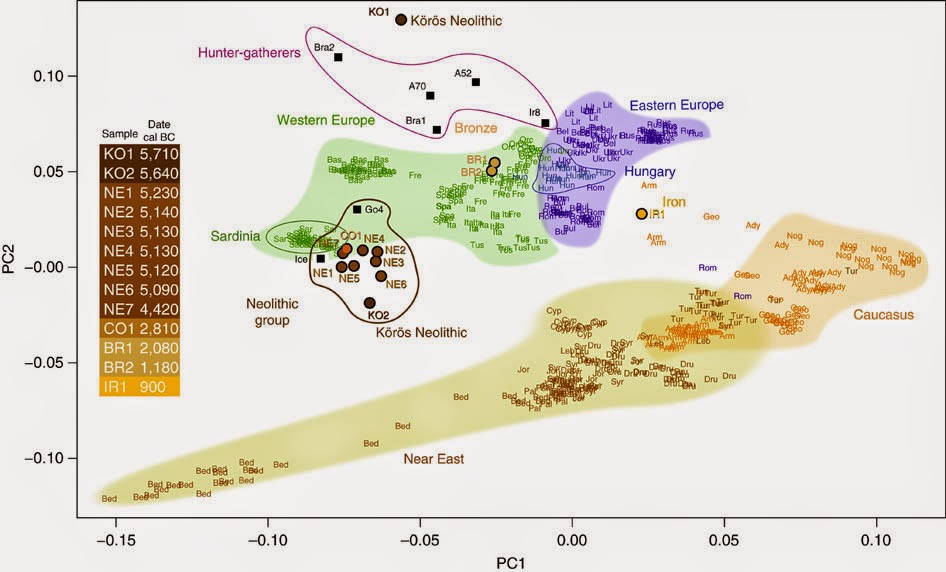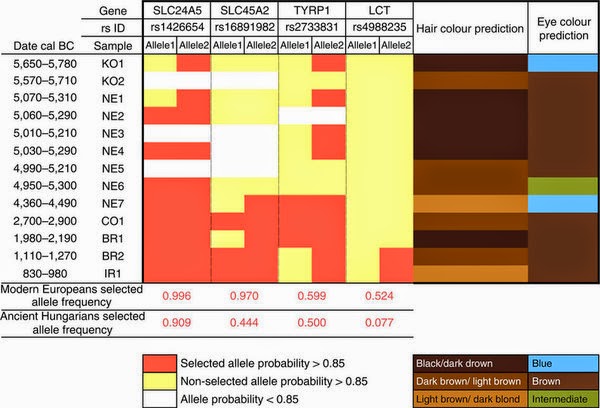@Moesan: Yes, I am interested in history, and this happens to be my home region, where I just stumble over things during weekend excursions (drowned towns on the Baltic Sea coast, Arab coins on display in the Museum in Lübeck, an innocently looking hill in Franconia enclosed by a Celtic wall, etc.), and get curious. Asides, German archaeology has gotten beyond its "let's excavate another Roman village west of the Rhine" focus and starts digging deeper, and they find a lot!
Before I write another long article - a few interesting links (the last one is in German, but you seem to understand a bit of it, and an executive summary is already in my last post):
http://www.academia.edu/2284930/_Wi...erxheim_Sr_isotopes_as_indicators_of_mobility
http://www.anr-mk-projekt.fr/IMG/pdf/EAA2012_programme.pdf
http://www2008.io-warnemuende.de/projects/sincos/archive/sdarticle.pdf
http://www.uni-kiel.de/ufg/bereiche/dateienJMueller/Mueller_aid.pdf
I leave I2a2 issue aside for a moment - we have other threads on that. Another point that you mentioned in a post here some time ago was the spread of megalithic culture. Here, we have two very interesting trends. One is the spread of the "allee couverte" / "Galeriegrab". The phenomenon appears almost simultaneously around 3,600 BC across the Michelsberg culture, but French archaeologists have recently established that it originated in the Paris basin and spread eastward. The principle is also copied in Westphalia - interestingly not in megalithic style, but with wood constructions that are filled with dry stone walls. Classical "allees couvertes" then spread further into southern Lower Saxony, Thuringia and the Elbe-Saale region, but only to a line slightly north of the Harz. Interestingly, together with these graves, the following objects, which may look familiar to you, are found:

Seems there has been a link from Brittany to the Elbe around 3,500 BC (and they probably called in "masters" to get the job done). And, surprisingly, the link wasn't Atlantic/ maritime, but continental.
Then, there is a second trend - the classic Nordic Megalithic, with an apparent epicentre on the Danish islands(see the maps at the end of my last link above). It starts with Kurgan-type burials - wooden grave chambers covered by large earth mounds ("Hünengräber"). Over time, additional wooden grave chambers are added, and the earth mound are elongated, until they reach a length of often more than 100 m. The mound is encircled with large stones, the so-called "Langbetten" (long barrows). Recent research has yielded that the earliest of these structures date to 4,100 BC, i.e. slightly
predate the shift from the Mesolithic Ertebolle to the Neolithic Funnelbeaker culture. From 3,650 on, the wooden chambers are replaced by Dolmen, but the overall context (earth mound encircled by long barrows) remains unchanged (i.e. no major population turnover). The appearance of Dolmen is at least contemporary with, possibly slightly predating the "allees couvertes", and the intensification of TRB agriculture, respectively. It is a mass movement: The total number of Dolmen in Northern Germany and Southern Scandinavia is estimated at 50,000 - that's not one per village, but one per farm-house. This points at a population of some 300-400 thousand people. The population density on the Danish isles should have ranged around 10-15 inhabitants / Km², about 50% higher than in the LBK core area during the 6th millennium. [
Do I need to come back on Motala HG I2a -probably not.] Undoubtedly, even if a lot of work was done by family & friends outside the agricultural season, specialised "engineers" (and quite a number of them, we are talking at least 100-150 projects per year) must have been available
for hire.
Dolmen construction spread gradually southward, though with limited intensity, to converge at the Weser and around the Harz with the "allees couvertes". The map below shows the approximate "border" for Saxony-Anhalt - the green area marks the "Hercynische Gruppe" where "allees couvertes" and Menirs are present. One should note that out of a total of 485 documented megalithic graves, only 15 are of the "Geleriegrab" or related stone cist type.
It all didn't end well: The Hercynian Group, a.k.a Salzmünde culture, for all its linkages to the Michelsberger Culture, was essentially Danubian in character, and had strong links to the Baden culture that had emerged in the old LBK homeland between Vienna and Budapest. [
Anybody acquainted with 18th century history will guess what is coming now - cultural ties between the '"Parisian" Michelsberger Culture and the "Vienna-Budapest" Baden culture weren't well developed either, but fortunately, there was a Bavaria-based culture in-between.]. In newly and rapidly settled Brandenburg (one farmhouse every 400m along the smaller and larger rivers!) a phenomenon that has been described as "archaeology-friendly", namely lots of fortified settlements and (non-decaying) weapons in the graves, developed in the 32nd century along a line running north-eastwards from the lower Saale through today's Berlin to the mouth of the Oder. By 3,100 BC, the "Nordic" Bernburg culture violently ends the Salzmünde culture and establishes itself around the Harz and in Thuringia, with influence zones into northern Bavaria and Bohemia. This seems to have implied a substantial population turnover, NHG mtDNA U (xK) becomes the dominating haplogroup in this culture. Further west, along the upper and middle Weser, the Michelsberger Kultur had already before given way to the Wartberg culture, but that appears to have been a peaceful process of cultural rather than demic diffusion.
My question here to you (and others): Has the Nordic Megalithic, as now assumed by many researchers, been an autochthonous development, or has it been promoted from outside? 4,100 BC is a bit early for my taste to relate Nordic Kurgans (Hünengräber) to those in the Pontic Steppes. If there has been a flow of ideas from Britanny, it didn't come overland or along the coast via the Netherlands and Northern Germany, because the expansion pattern of Nordic Dolmen was the other way round. That leaves the possibility of spread via the British Isles - but has there been substantial Dolmen construction prior to 3,650 BC?







